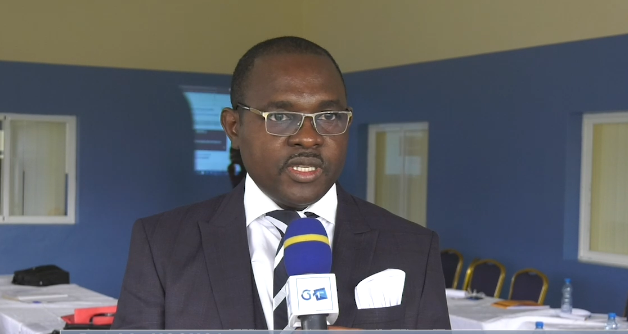Gabon State purchasing targets lower costs and volatility
Brent (BZ=F) steadies near key support as EURUSD=X trends flat; investors assess Gabon’s state-led procurement reform, its impact on inflation stability, fiscal risk, and sovereign spreads across Central Africa’s frontier debt markets.

Gabon’s plan to establish a National Procurement Centre marks a structural pivot toward state-led price and supply stabilisation at a time of moderate growth and fragile fiscal buffers. Nominal GDP stood at about USD 21 billion in 2024, with real expansion forecast between 1.9% and 2.4% in 2025. The reform unifies public purchasing of key imports—food, construction materials and medical goods—under a single buyer mandated to reduce mark-ups, shorten delivery times and maintain strategic inventories. The initiative reflects Gabon’s exposure to imported inflation and logistics shocks that lifted regional food costs through 2024, even as average consumer inflation eased to 1.2% year on year.
The design consolidates procurement to capture scale efficiencies and steady domestic supply. Aggregated demand could lower unit costs by around 10% relative to fragmented ministry tenders. A three-month stock-buffer target aims to mitigate seasonal shortages and smooth price volatility, while integrated logistics—covering procurement, warehousing and inland transport—seeks to cut lead times by roughly 25%.
These gains transfer operational risk to the public balance sheet. Any delay or commodity-price spike would generate losses absorbed by the Treasury. Gabon’s 2024 fiscal deficit is estimated between 2% and 4% of GDP, with debt near 74% of GDP. Without transparent contracts and prompt cash-flow reconciliation, the programme could widen financing needs or create new contingent liabilities.
Macroeconomic channels are direct. Food and construction inputs carry high weights in the consumer basket; stabilising their supply would compress headline volatility and anchor expectations. Regional forecasts place CEMAC inflation near 2.6% to 2.8% in 2025, consistent with the BEAC’s nominal anchor under the euro peg. Sustained disinflation would reduce the term premium on local-currency debt and ease private-sector planning. Conversely, cost overruns would offset these gains, raising the sovereign risk premium and crowding out capital spending. The procurement reform therefore complements infrastructure investment rather than substituting for it; port congestion and elevated freight rates still drive landed-cost inflation and limit non-oil export competitiveness.
Sectoral outcomes are uneven. Importers and wholesalers face narrower margins as the state concentrates purchasing power, yet predictable tender calendars may improve working-capital management and reduce payment delays. Domestic manufacturers benefit from steadier demand signals and improved delivery reliability, supporting capacity utilisation. For construction firms, lower input volatility should flatten project costs and stabilise employment. Banks see reduced default risk among clients exposed to inventory shocks but greater contingent exposure if the procurement entity requires Treasury support. Fiscal space remains tight: interest payments absorb a significant share of revenue, and debt-service pressures constrain discretionary spending. Any additional transfers to the centre must be offset by verified procurement savings to avoid widening the primary deficit.
Market conditions offer limited tolerance for error. The CFA franc peg to the euro continues to anchor confidence, while Gabon’s external position hinges on hydrocarbons, with Brent <BZ=F> prices shaping export receipts and fiscal flows. The euro cross <EURUSD=X> influences imported-goods costs through the peg’s pass-through mechanism. Regional yields along the CEMAC curve have eased modestly as inflation falls, but investor appetite remains contingent on credible fiscal management. International investors view Gabon’s initiative as part of a broader shift among commodity exporters toward coordinated procurement to manage external shocks without constraining monetary policy. Success could strengthen policy credibility and narrow spreads; failure would highlight persistent execution risk in frontier sovereigns.
By end-2026, three metrics will determine whether Gabon’s procurement reform delivers measurable macro results: verified procurement-cost savings of at least 10% against 2023–2024 averages; essential-goods stock-out rates below 5% per year; and net budget transfers to the purchasing entity capped at 2% of non-oil revenue. Achieving these benchmarks would anchor inflation near the regional 2.5% target, compress sovereign spreads by 50–70 basis points versus peers, and strengthen investor confidence in the state’s operational discipline. Missing them would reaffirm fiscal vulnerability and leave Gabon’s risk premium tied to oil-price volatility rather than institutional reform.





